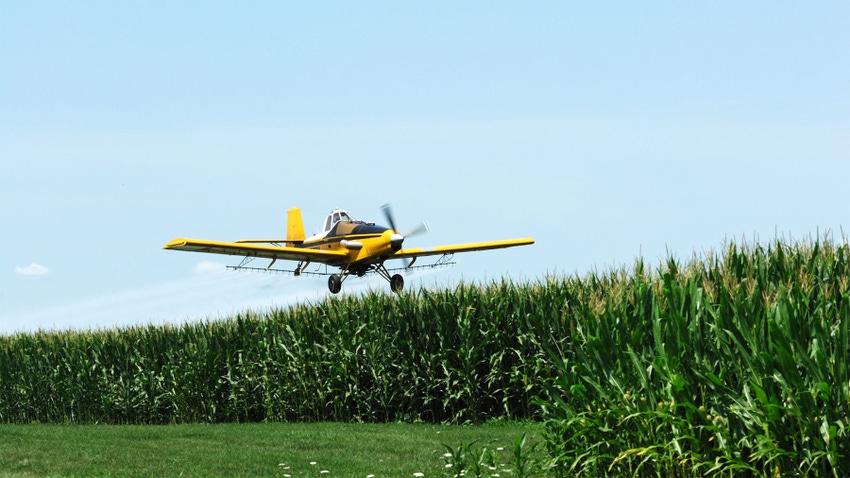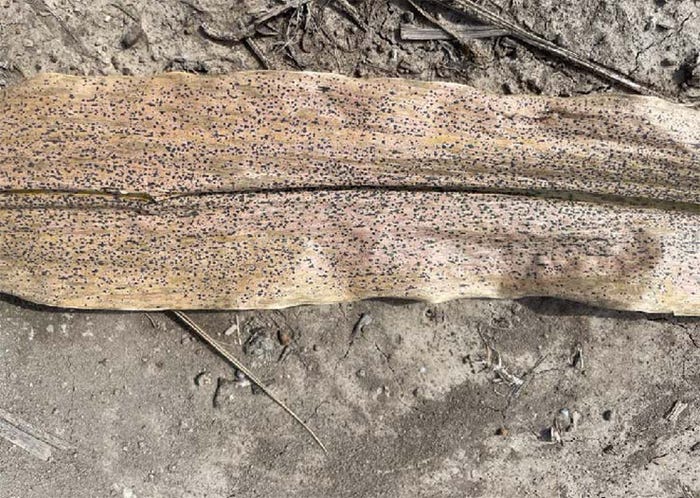
The appearance of tar spot in northwest Missouri last year drove a panic response in some farmers.
“There were a lot of applications going out late, and there were at least two passes going on — in some cases, three passes — of fungicides being applied to corn to try to protect yield,” Mandy Bish, University of Missouri Extension state plant pathologist, said during the 2023 MU Crop Management Conference.
However, no data back up late-season applications at R4 or R5, or a third pass protecting yield.

GET READY: Mandy Bish, MU Extension state plant pathologist, talked about tar spot during summer field days in 2023. However, the disease ramped up in August, creating problems for farmers across Missouri. (Mindy Ward)
She noted two distinct types of farmers in Missouri when it comes to dealing with tar spot — one that sees it and wants to spray immediately, and the other who says it has been here for years and has not caused yield losses yet.
Bish said information should drive farmers’ decisions on tar spot management.
Deal with it
Last year, tar spot spread and reached 42% of counties in Missouri. The fungus responsible for tar spot overwinters in the soil and on residue.
“So now that it's here,” Bish warned, “it's not going away.”
She offered farmers a few management tips:
Scout fields. Tar spot is most often confused with insect frass. The difference is frass can wipe off; tar spot cannot. Bish said farmers can take a photo and send it to her for confirmation.
Download Tarspotter app. This is a free mobile app from the University of Wisconsin to help guide fungicide applications for tar spot. Management practices, crop stage and weather within a given field are used to generate site-specific risk prediction. “If you're in an area where you have enough inoculum to cause disease, I would at least suggest using the Tarspotter app to guide you,” Bish said. Download it for Apple or Android.
Test your eyes. At 5% coverage with tar spot, Bish said, yield is already being affected. “The problem is what 5% might look like can differ from farmer to farmer. The Crop Protection Network has a practice quiz web tool to help train your eyes for more accurate disease and defoliation ratings on field crops. It allows you to hone assessment skills for common crop diseases."
Be patient. “We can’t let fear drive decisions,” Bish said. If the disease shows up in June, look at the July forecasted temperatures. Then be prepared to apply fungicides.
Apply fungicides at VT or R1. Bish said the data so far shows that application timing of VT or R1 is most consistent with protecting yield. Applications up to R3 can protect some yield loss. At the R4 or R5 stage, there is no research to indicate yield loss is being protected. Residual products with multiple modes of action work best.
Watch irrigation. Tar spot likes water to spread. “We are hearing reports of 40-bushel-per-acre losses under pivot irrigation,” Bish added. “If you see tar spot prior to that R4-R5 growth stage, consider reducing irrigation.”

IDENTIFIER: Tar spot is seen on a corn leaf. (Mandy Bish, MU Extension)
For much of Missouri, a tar spot strategy should be a part of every crop management plan moving forward.
Read more about:
Tar SpotAbout the Author(s)
You May Also Like






